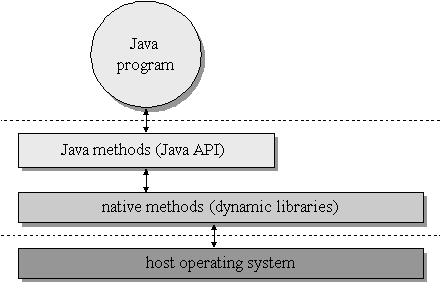Together, the Java virtual machine and Java API form a "platform" for which all Java programs are compiled. In addition to being called the Java runtime system, the combination of the Java virtual machine and Java API is called the Java Platform (or, starting with version 1.2, the Java 2 Platform).
https://www.artima.com/insidejvm/ed2/introarch.html
In short, the JRE is a sort of meta-OS for Java programs. It's a classic example of abstraction, abstracting the underlying operating system into a consistent platform for running Java applications.
https://www.javaworld.com/article/3304858/what-is-the-jre-introduction-to-the-java-runtime-environment.html
jre是操作系统(jvm)提供的api。
jdk 封装了常用jar包、编译工具等。
jvm是跨平台操作系统。所有平台的jvm向下定制,向上提供一致性接口。
JRE是虚拟中间层系统;
jvm是这个虚拟系统的解释、转换核心。
The class files of the Java API are inherently specific to the host platform. The API's functionality must be implemented expressly for a particular platform before that platform can host Java programs. To access the native resources of the host, the Java API calls native methods. As you can see in Figure 1-6, the class files of the Java API invoke native methods so your Java program doesn't have to. In this manner, the Java API's class files provide a Java program with a standard, platform-independent interface to the underlying host. To the Java program, the Java API looks the same and behaves predictably no matter what platform happens to be underneath. Precisely because the Java virtual machine and Java API are implemented specifically for each particular host platform, Java programs themselves can be platform independent.

Figure 1-6. A platform-independent Java program.